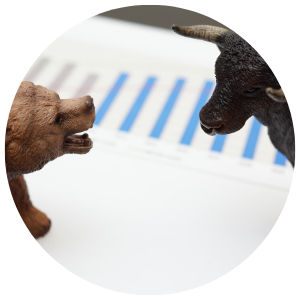10 Important Facts About The End Of The Bull Market

As an investor, experiencing the effects of the investment cycle, including bear markets is a fact of life. While downturns can understandably cause concern, it’s important to remember that bear markets are a normal part of the investment cycle and the stock market has recovered from every past correction and recession.
We understand that this is a challenging time, but we hope this will answer any questions you might have surrounding historical bear market trends.
1. That Infamous 20%:
Markets are measured by highs and lows, so when indices drop 20% (or more) from their high, that’s am bear market. A bull market is simply the opposite, a gain of 20% from its low-water mark.
2. Historically, stocks have fallen 36% in a bear market.
3. This is normal.
4. Bears don't typically last long.
The typical duration of a bear market is about 300 days. That’s around 10 months. That means bear markets are usually shorter than bull markets, which average 2.75 years.
5. 38 months.
That is how long we typically go between bear markets.
6. They are becoming less common.
From about 1928 until 1945, we had 12 20% or greater downturns. In the 75 years since WWII ended, there have only been 13.
7. One out of every two of the S&P's best days (in the last 20 years) happened during a bear market.
8. Don't confuse the market and the economy.
They are not the same. In the last 90 years, there have been almost twice as many bear markets as recessions (25/14). (The message here is that downturns in the market don’t always signal a recession.)4
9. People who invest for 50 years will likely experience roughly 14 bear markets.
A proper asset allocation is important for investors to feel comfortable weathering the ups and downs of the market.
10. Markets go down but history suggests they rise more than they fall.
In the last 9 decades, we’ve had bear markets for just under 21 years. That means that stocks were moving up more than 75% of the time.
1: Source for bear/bull market stats is Ned Davis Research as of 12/31/19 unless otherwise noted.
2: The S&P 500 Index is a market capitalization-weighted price index composed of 500 widely held common stocks.
3: Source: Ned Davis Research, 2/20. Time period referenced is 1/3/2000-12/31/2019.
4: Source: National Bureau of Economic Research, 1/20
5: Source: Ned Davis Research, 1/20. Past performance does not guarantee future results. Investors cannot directly invest in an index.
Hilltop Wealth Solutions is an Investment Advisor registered with the Securities and Exchange Commission. MAR2020.








